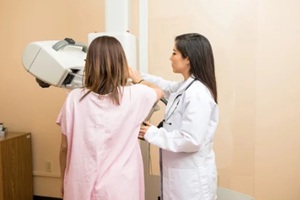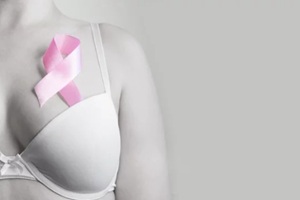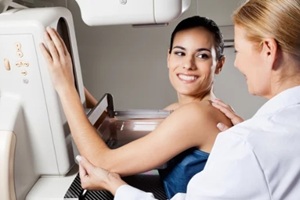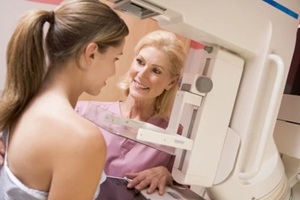 Perimenopause is a natural phase in every woman’s life, a transitional period before menopause when your body begins to adjust to changing hormone levels. The symptoms you experience during this time, such as mood swings and irregular periods, can be wide-ranging and sometimes confusing. While many of these changes are normal, it’s important to recognize when symptoms may be signaling something more serious.
Perimenopause is a natural phase in every woman’s life, a transitional period before menopause when your body begins to adjust to changing hormone levels. The symptoms you experience during this time, such as mood swings and irregular periods, can be wide-ranging and sometimes confusing. While many of these changes are normal, it’s important to recognize when symptoms may be signaling something more serious.
Knowing when to seek help from a perimenopause doctor can make a real difference in your comfort and well-being.
Common Perimenopausal Symptoms
During perimenopause, your body goes through many changes, and symptoms can vary widely from one woman to another. Some of the most common experiences include irregular periods that may become heavier or lighter, hot flashes that cause sudden waves of heat, and mood swings that may cause you to become more irritable or even sad.
It is common to experience frequent sleep disturbances, such as difficulty falling or staying asleep and vaginal dryness, which can affect comfort during intimacy. Many women report feeling unusually tired, even with plenty of rest.
While these symptoms are all normal parts of this transition, their impact on daily life can sometimes feel overwhelming. It’s important to bear in mind that every woman experiences perimenopause differently, and symptom severity can change over time.
Signs That Medical Help May Be Needed
While many perimenopausal symptoms are a normal part of the transition, certain signs should prompt you to seek medical help. Look out for:
- Extremely heavy or prolonged bleeding: If your periods last longer than usual, or you need to change pads or tampons multiple times an hour.
- Severe mood changes or depression: Feelings of deep sadness, anxiety, or mood swings that affect your daily functioning.
- Intense hot flashes: Hot flashes that disrupt your sleep or make daily activities difficult.
- Sudden or unexplained weight changes: Rapid weight gain or loss with no apparent cause.
- Symptoms interfering with work, relationships, or mental health: When your symptoms impact your ability to perform at work or maintain relationships.
- Persistent pelvic pain or unusual vaginal bleeding: These could signal other health issues that need evaluation.
Bear in mind, perimenopause affects every woman differently, and what feels manageable for one woman may be overwhelming for another. Paying attention to how your symptoms affect your daily life is essential. Don’t hesitate to contact a health provider if you notice any changes that leave you feeling drained, anxious, or out of balance. Early support can help you regain control and improve your quality of life.
What to Expect During a Medical Consultation
 When you visit a healthcare provider about your perimenopausal symptoms, the first step is a thorough and compassionate conversation. Your provider will listen to your symptoms, concerns, and how these changes affect your life. To rule out other potential health problems contributing to your symptoms, your physician may recommend tests, such as blood work or a pelvic exam.
When you visit a healthcare provider about your perimenopausal symptoms, the first step is a thorough and compassionate conversation. Your provider will listen to your symptoms, concerns, and how these changes affect your life. To rule out other potential health problems contributing to your symptoms, your physician may recommend tests, such as blood work or a pelvic exam.
Together, you’ll discuss a range of treatment options, from simple lifestyle adjustments, such as diet and exercise, to hormonal or non-hormonal therapies that meet your individual needs. Open and honest communication is essential to creating a personalized care plan that aligns with your own experience through perimenopause.
Treatment Options and Support Available
When it comes to managing perimenopausal symptoms, there’s no one-size-fits-all solution. Many women find relief through lifestyle adjustments, such as improving nutrition, incorporating regular exercise, and practicing stress management techniques such as yoga or mindfulness. These changes can boost overall well-being and ease symptoms naturally.
For some, hormone therapy may be an effective option. It can help balance fluctuating hormone levels and reduce symptoms such as night sweats and hot flashes. However, it’s important to discuss the benefits and risks with your healthcare provider to determine if it’s right for you.
Non-hormonal medications and supplements, such as certain antidepressants or herbal remedies, may relieve specific symptoms. In addition, counseling or joining support groups can offer emotional support, helping you work through mood changes and connect with others going through similar experiences.
As your experiences change, adjusting your treatment plan to accommodate new or evolving symptoms may be necessary. Maintain an open dialogue with your health provider and ask questions or share concerns as they arise. Being an active partner in your care empowers you to find the best approach for your exclusive transition.
Contact Raleigh Gynecology & Wellness Today for Specialized Care

Perimenopause is a natural, often challenging transition that may feel overwhelming, especially when symptoms are sudden or start to worsen over time. Recognizing when to seek medical help and personalized treatment options can make a significant difference in your comfort and overall quality of life.
When your symptoms feel overwhelming or you want guidance, the compassionate team at Raleigh Gynecology & Wellness can help you confidently take charge of your health. Schedule an appointment today.

 Menopause can bring several physical changes that directly impact intimacy. Vaginal dryness and thinning of vaginal walls, also known as vaginal atrophy or genitourinary syndrome of menopause, are common, often leading to irritation or
Menopause can bring several physical changes that directly impact intimacy. Vaginal dryness and thinning of vaginal walls, also known as vaginal atrophy or genitourinary syndrome of menopause, are common, often leading to irritation or  If changes in your libido or intimacy are causing distress, discomfort, or affecting your relationship, it may be time to speak with your gynecologist or
If changes in your libido or intimacy are causing distress, discomfort, or affecting your relationship, it may be time to speak with your gynecologist or  When you’re finally ready to have a baby, you don’t want anything to slow that down. The speed at which a woman can conceive after stopping birth control varies, but not necessarily for the reasons you may think. A common belief is that prolonged use of
When you’re finally ready to have a baby, you don’t want anything to slow that down. The speed at which a woman can conceive after stopping birth control varies, but not necessarily for the reasons you may think. A common belief is that prolonged use of  For example, birth control can mask
For example, birth control can mask  Don’t let your fear of not getting pregnant in the future stop you from getting the
Don’t let your fear of not getting pregnant in the future stop you from getting the  Many women experience a wave of anxiety and uncertainty when it’s time for their routine
Many women experience a wave of anxiety and uncertainty when it’s time for their routine  The U.S. Food and Drug Administration (FDA) has
The U.S. Food and Drug Administration (FDA) has  Leading clinics aim to provide personalized care that respects these differences, offering space for open conversations about screening options.
Leading clinics aim to provide personalized care that respects these differences, offering space for open conversations about screening options.
 Clinics that specialize in women’s health understand the specific needs of patients with breast implants. With a focus on personalized, judgment-free care, these providers use specialized techniques to make sure that screenings are both effective and comfortable. The objective is to build a supportive environment where all women feel informed, safe, and respected.
Clinics that specialize in women’s health understand the specific needs of patients with breast implants. With a focus on personalized, judgment-free care, these providers use specialized techniques to make sure that screenings are both effective and comfortable. The objective is to build a supportive environment where all women feel informed, safe, and respected.